Top Rankings
Fox Lake Gsd 114 School District ranks among the top 20% of public school district in Illinois for:
Category
Attribute
Student Attention
Lowest student:teacher ratio (Top 1%)
For the 2025 school year, there are 2 public elementary schools serving 632 students in Fox Lake Gsd 114 School District. This district's average elementary testing ranking is 2/10, which is in the bottom 50% of public elementary schools in Illinois.
Public Elementary Schools in Fox Lake Gsd 114 School District have an average math proficiency score of 10% (versus the Illinois public elementary school average of 26%), and reading proficiency score of 16% (versus the 30% statewide average).
Minority enrollment is 40% of the student body (majority Hispanic), which is less than the Illinois public elementary school average of 56% (majority Hispanic).
Overview
This School District
This State (IL)
# Schools
2 Schools
3,104 Schools
# Students
632 Students
1,223,907 Students
# Teachers
68 Teachers
89,922 Teachers
Student : Teacher Ratio
9:1
9:1
District Rank
Fox Lake Gsd 114 School District, which is ranked within the bottom 50% of all 844 school districts in Illinois (based off of combined math and reading proficiency testing data) for the 2020-2021 school year.
Overall District Rank
#726 out of 852 school districts
(Bottom 50%)
(Bottom 50%)
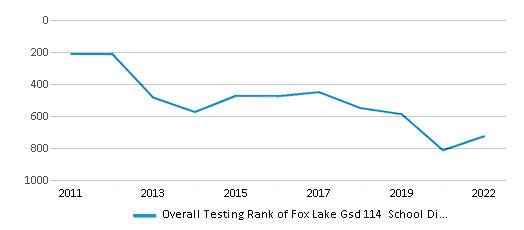
Math Test Scores (% Proficient)
(20-21)11%
28%
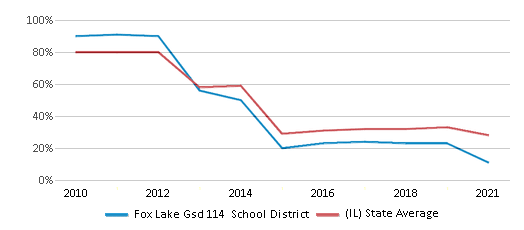
Reading/Language Arts Test Scores (% Proficient)
17%
30%

Science Test Scores (% Proficient)
35-39%
50%
Students by Ethnicity:
Diversity Score
0.54
0.71
# American Indian Students
n/a
2,875 Students
% American Indian Students
n/a
1%
# Asian Students
8 Students
66,874 Students
% Asian Students
1%
6%
# Hispanic Students
205 Students
327,522 Students
% Hispanic Students
32%
27%
# Black Students
12 Students
200,526 Students
% Black Students
2%
17%
# White Students
377 Students
537,078 Students
% White Students
60%
44%
# Hawaiian Students
n/a
1,010 Students
% Hawaiian Students
n/a
n/a
# Two or more races Students
30 Students
52,605 Students
% of Two or more races Students
5%
5%
Students by Grade:
# Students in PK Grade:
71
55,955
# Students in K Grade:
57
116,411
# Students in 1st Grade:
52
126,375
# Students in 2nd Grade:
67
167,370
# Students in 3rd Grade:
52
130,315
# Students in 4th Grade:
62
130,334
# Students in 5th Grade:
61
129,913
# Students in 6th Grade:
69
132,181
# Students in 7th Grade:
65
113,007
# Students in 8th Grade:
76
113,824
# Students in 9th Grade:
-
2,377
# Students in 10th Grade:
-
2,138
# Students in 11th Grade:
-
1,882
# Students in 12th Grade:
-
1,813
# Ungraded Students:
-
12
District Revenue and Spending
The revenue/student of $20,005 in this school district is less than the state median of $21,990. The school district revenue/student has grown by 9% over four school years.
The school district's spending/student of $20,101 is less than the state median of $21,244. The school district spending/student has grown by 9% over four school years.
Total Revenue
$13 MM
$41,381 MM
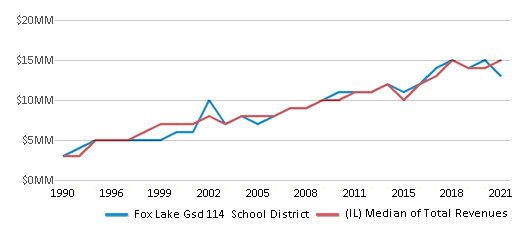
Spending
$13 MM
$39,976 MM
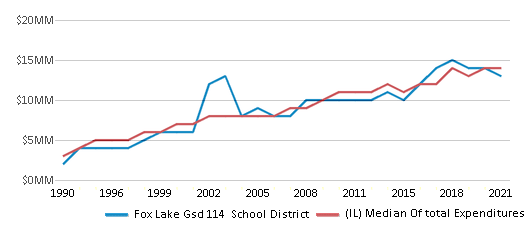
Revenue / Student
$20,005
$21,990
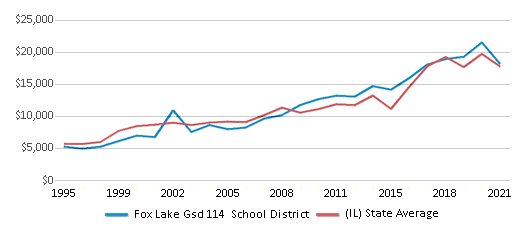
Spending / Student
$20,101
$21,244
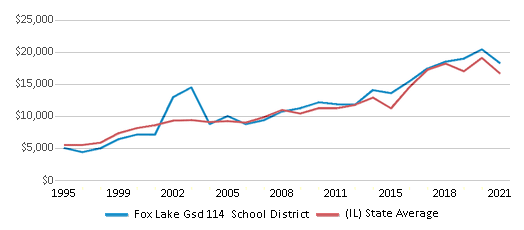
Best Fox Lake Gsd 114 School District Public Elementary Schools (2025)
School
(Math and Reading Proficiency)
(Math and Reading Proficiency)
Location
Grades
Students
Rank: #11.
Stanton School
Rank:
3/
Bottom 50%10
101 Hawthorne Ln
Fox Lake, IL 60020
(847) 973-4205
Fox Lake, IL 60020
(847) 973-4205
Grades: 5-8
| 271 students
Rank: #22.
Lotus School
Rank:
3/
Bottom 50%10
29067 W Grass Lake Rd
Spring Grove, IL 60081
(847) 973-4105
Spring Grove, IL 60081
(847) 973-4105
Grades: PK-4
| 361 students
Recent Articles

Year-Round Or Traditional Schedule?
Which is more appropriate for your child? A year-round attendance schedule or traditional schedule? We look at the pros and cons.

Why You Should Encourage Your Child to Join a Sports Team
Participating in team sports has a great many benefits for children, there is no doubt. In this article you will learn what those benefits are.

White Students are Now the Minority in U.S. Public Schools
Increasing birth rates among immigrant families from Asia and Central and South America, combined with lower birth rates among white families, means that for the first time in history, public school students in the United States are majority-minority. This shift in demographics poses difficulties for schools as they work to accommodate children of varying language abilities and socio-economic backgrounds.





